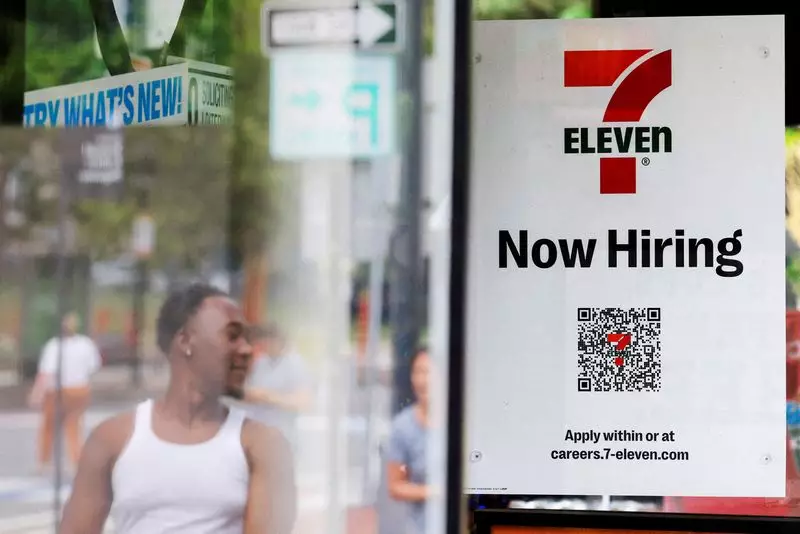The recent data on U.S. job growth indicates a slowdown in the pace of employment in June, with the unemployment rate remaining steady at 4%. This moderation in job creation is expected to have a significant impact on the Federal Reserve’s ability to manage inflation without causing a recession. While the nonfarm payrolls are projected to have increased by 190,000 jobs in June, down from the previous month, the average wage growth rate has also slowed down to its lowest level in three years. This trend suggests that the economy is on a disinflationary path, which could give the Fed more room to consider rate cuts later in the year.
One of the challenges in measuring job growth accurately is the discrepancy between different data sources. For example, the Quarterly Census of Employment and Wages (QCEW) data indicates a slower pace of job creation compared to the official payrolls data. Economists attribute this difference to the exclusion of undocumented immigrants in the QCEW data, which may have contributed significantly to job growth in previous years. As a result, revisions to the payrolls data are expected to reflect a more accurate picture of employment trends in the U.S.
The recent job growth has been largely driven by sectors such as healthcare, leisure, hospitality, and state/local government education. These sectors have seen a resurgence in hiring as they work towards pre-pandemic staffing levels. However, the pace of job creation in these sectors is slowing down, partly due to the impact of rate hikes by the Fed to control inflation. The excess savings accumulated during the pandemic have been depleted, leading to a decrease in demand for labor, goods, and services across various industries.
Despite the slowdown in job growth, wage growth remains at a level that can sustain consumer spending and overall economic expansion. Average hourly earnings are expected to have increased by 0.3% in June, contributing to an annual wage growth of 3.9%. This is in line with the Fed’s inflation target of 2%, indicating that the central bank may not need to make drastic changes to its interest rate policy. Economists note that the recent moderation in wage growth is a result of increasing productivity levels, which could help prevent inflationary pressures in the economy.
There are concerns among economists that the Fed’s current monetary policy stance may hinder economic growth if interest rates remain elevated for too long. While the central bank has acknowledged the slowdown in the economy and diminishing price pressures, there is a risk of stifling growth by maintaining high borrowing costs. The interplay between job growth, wage growth, and inflation remains a critical factor in determining the Fed’s future policy decisions.
The recent data on U.S. job growth and wage growth points to a more balanced economic outlook, with the potential for future rate cuts by the Federal Reserve. While the moderation in job creation may pose some challenges, the overall disinflationary trend could help sustain economic expansion without driving up inflation. It is essential for policymakers to carefully monitor these trends and adjust monetary policy accordingly to support sustainable growth in the U.S. economy.


Leave a Reply